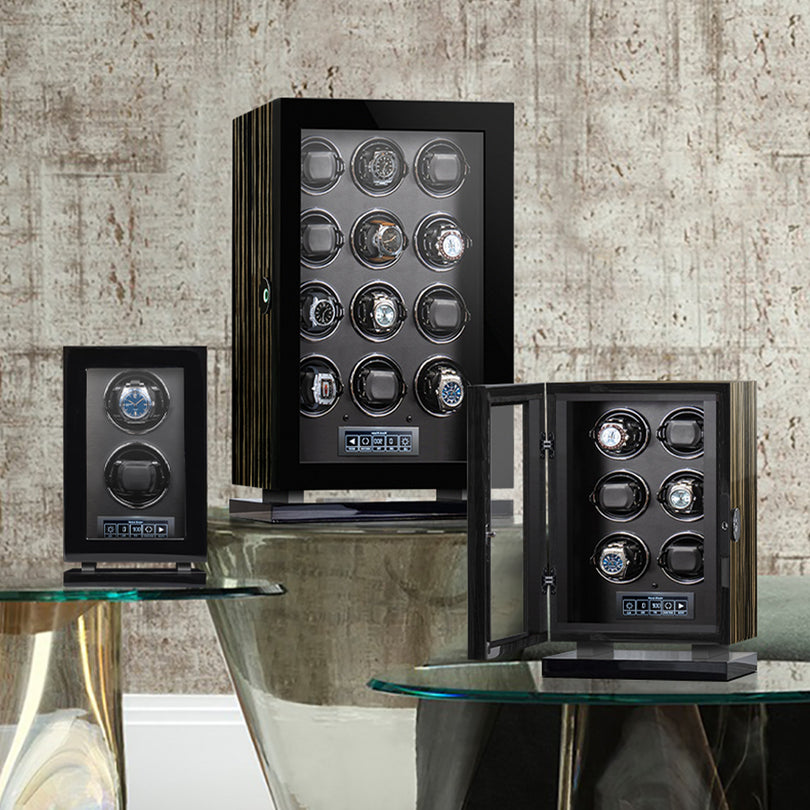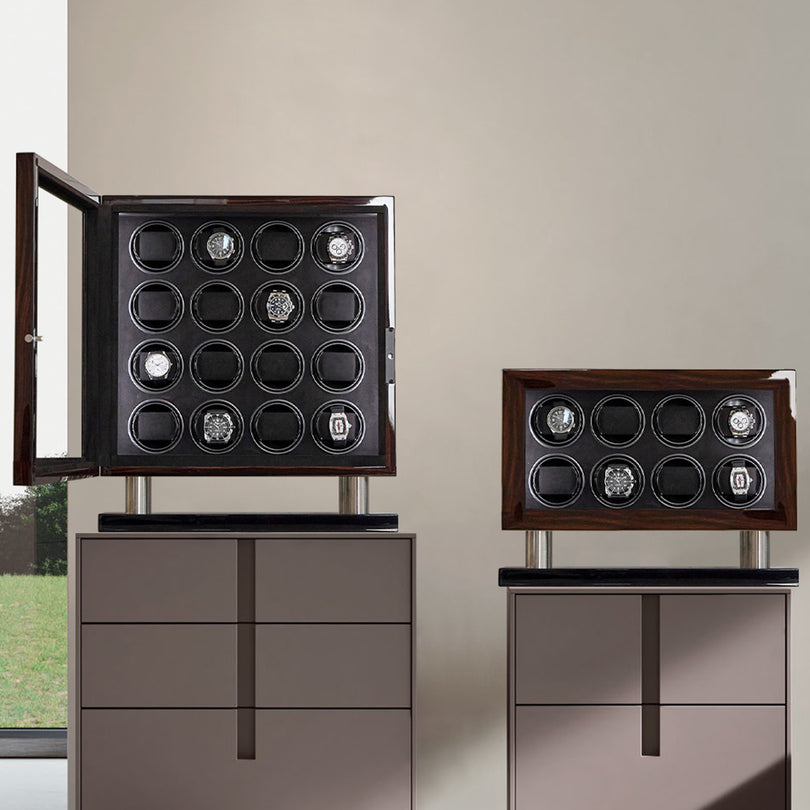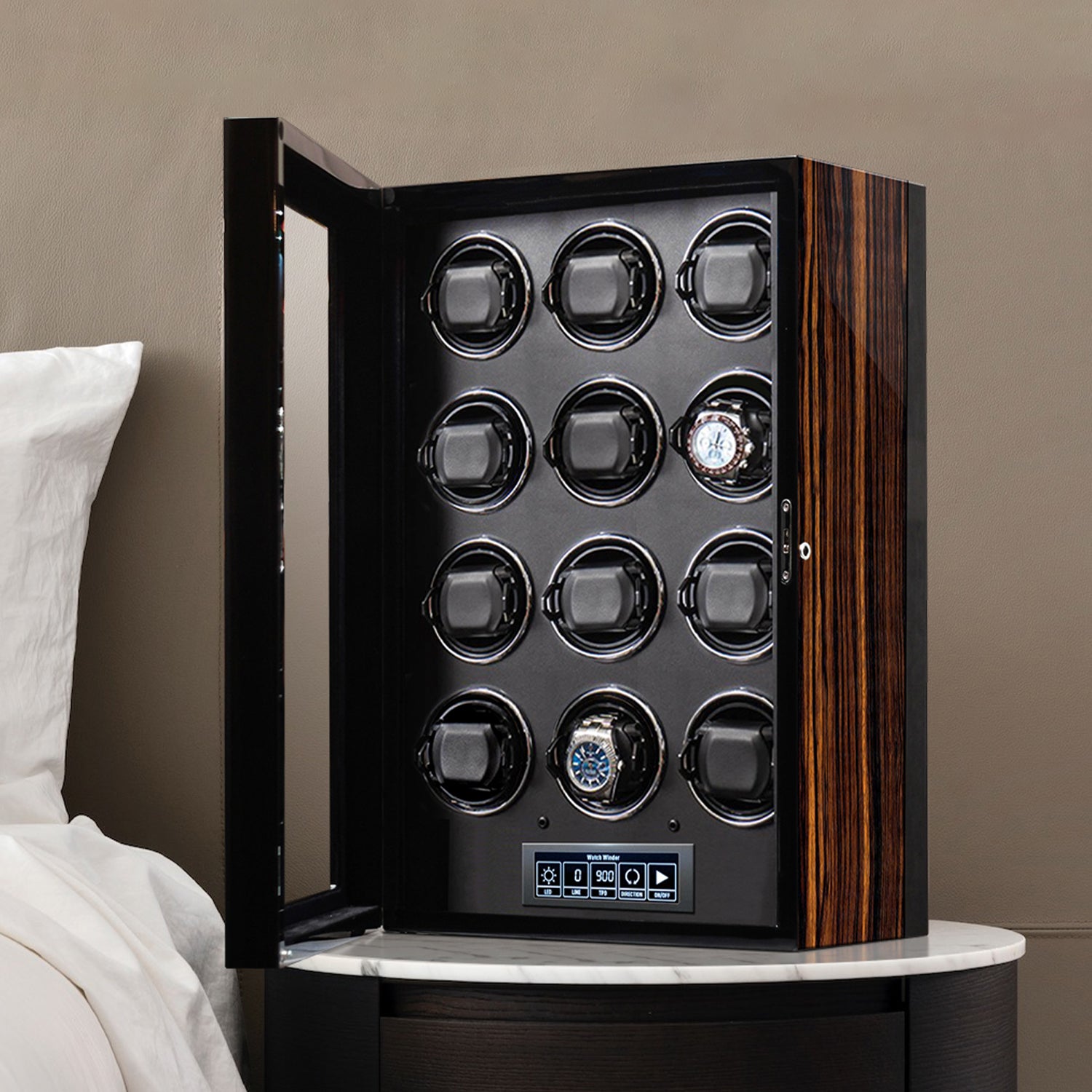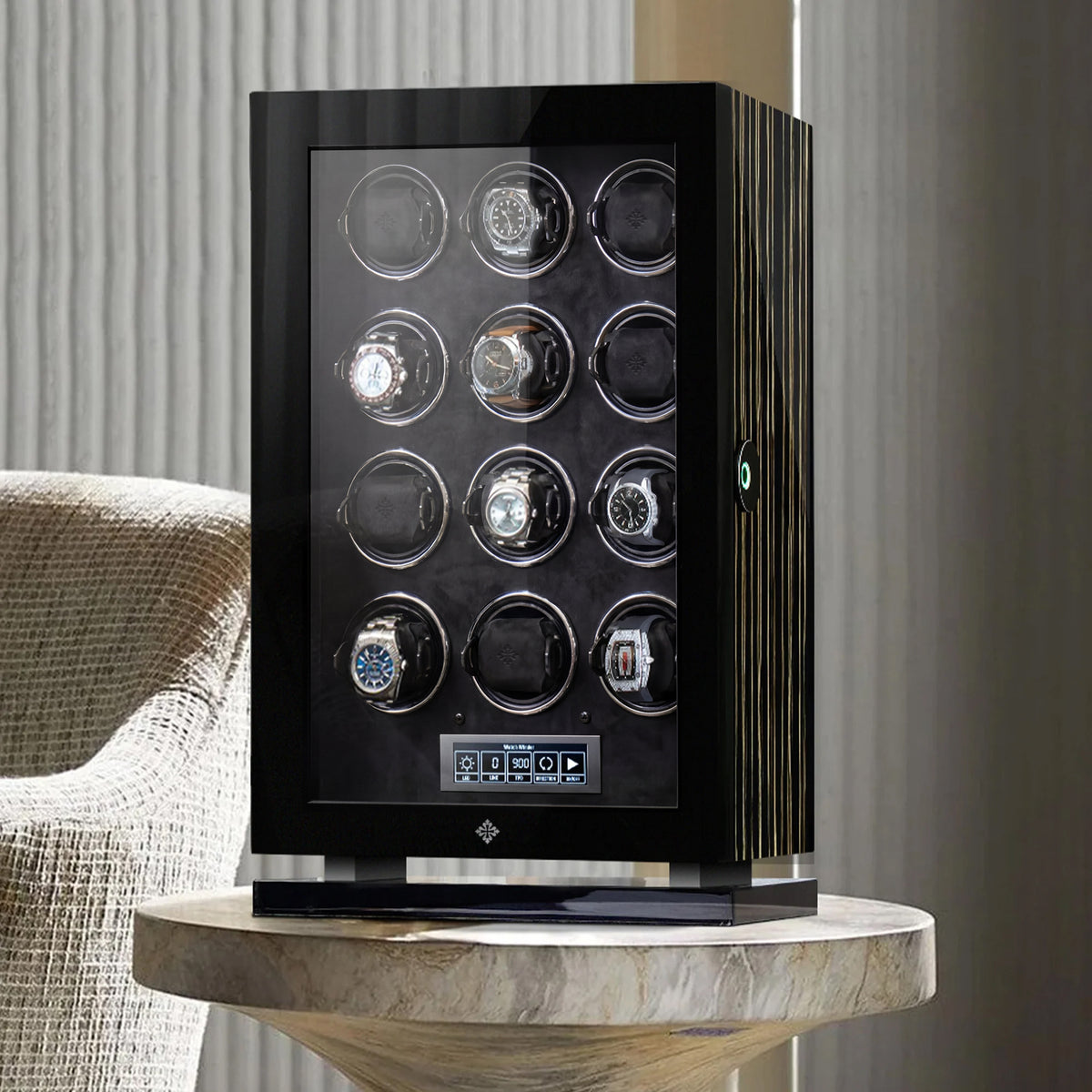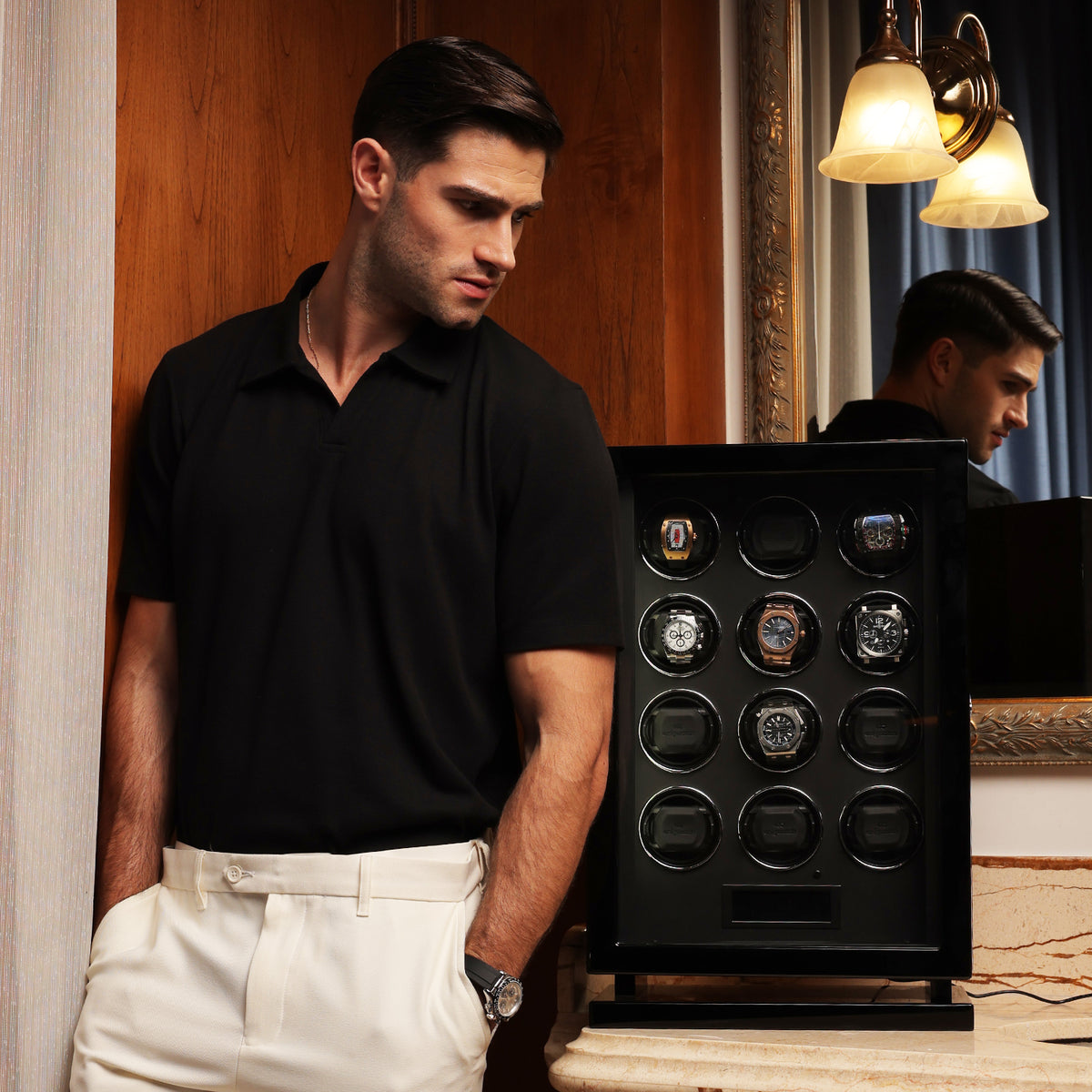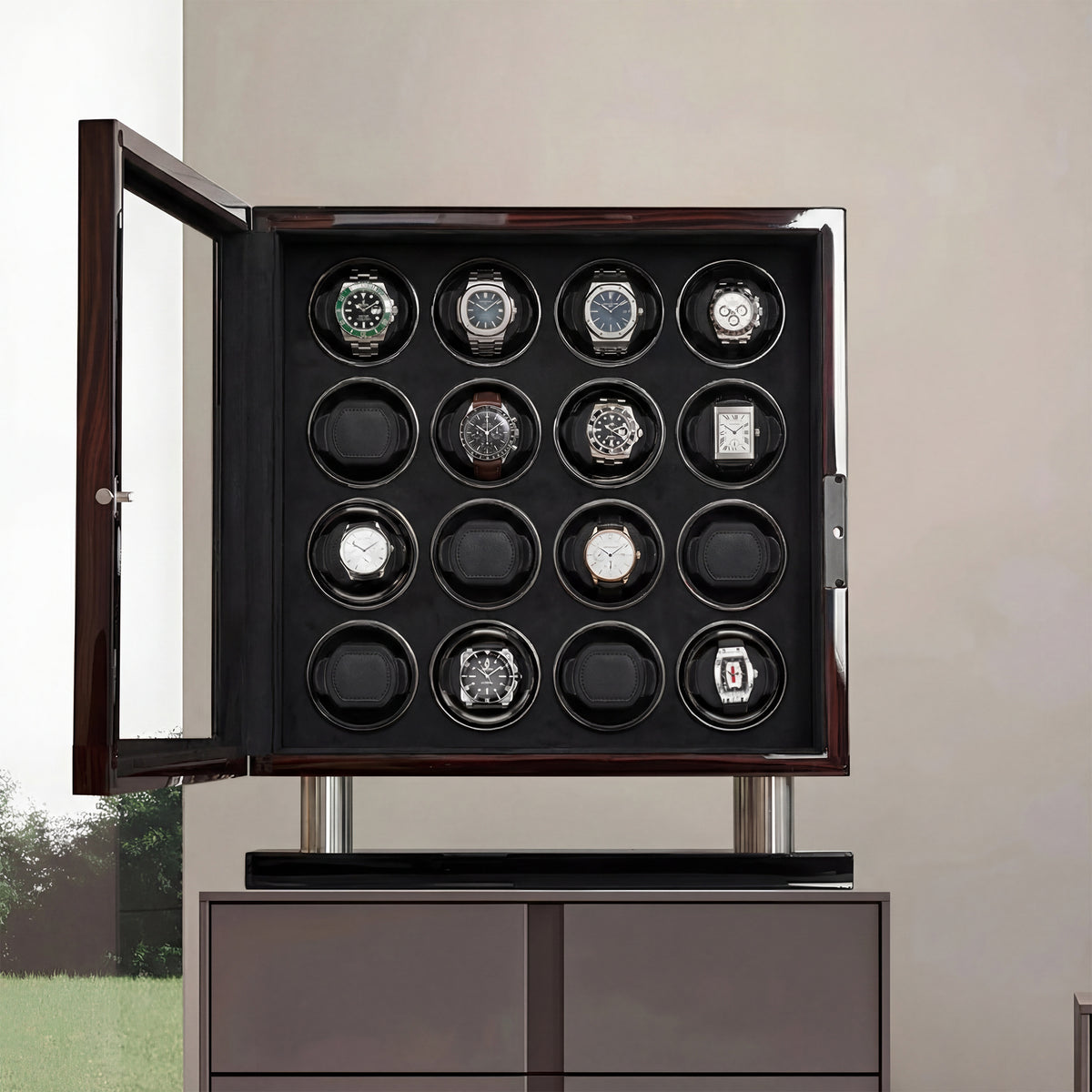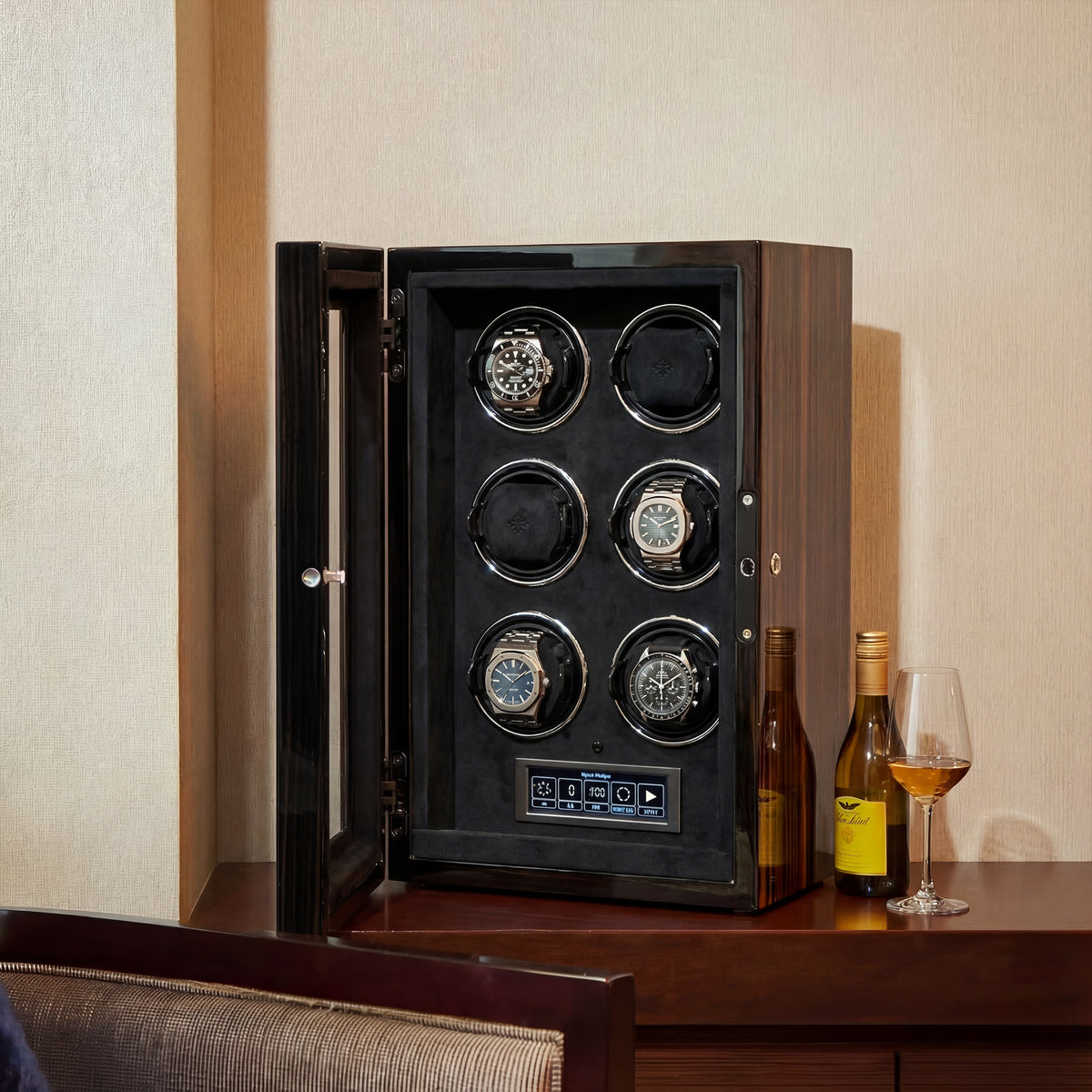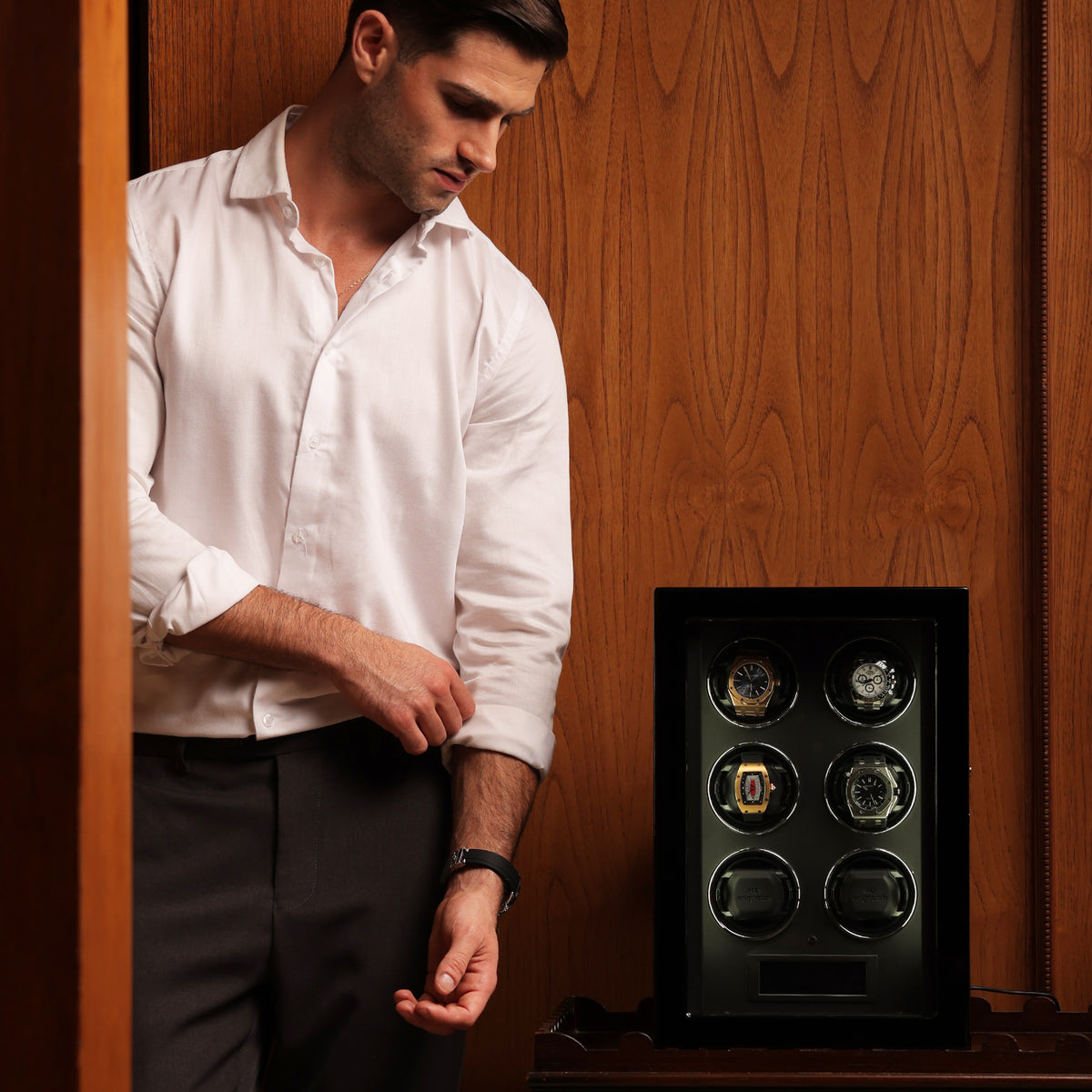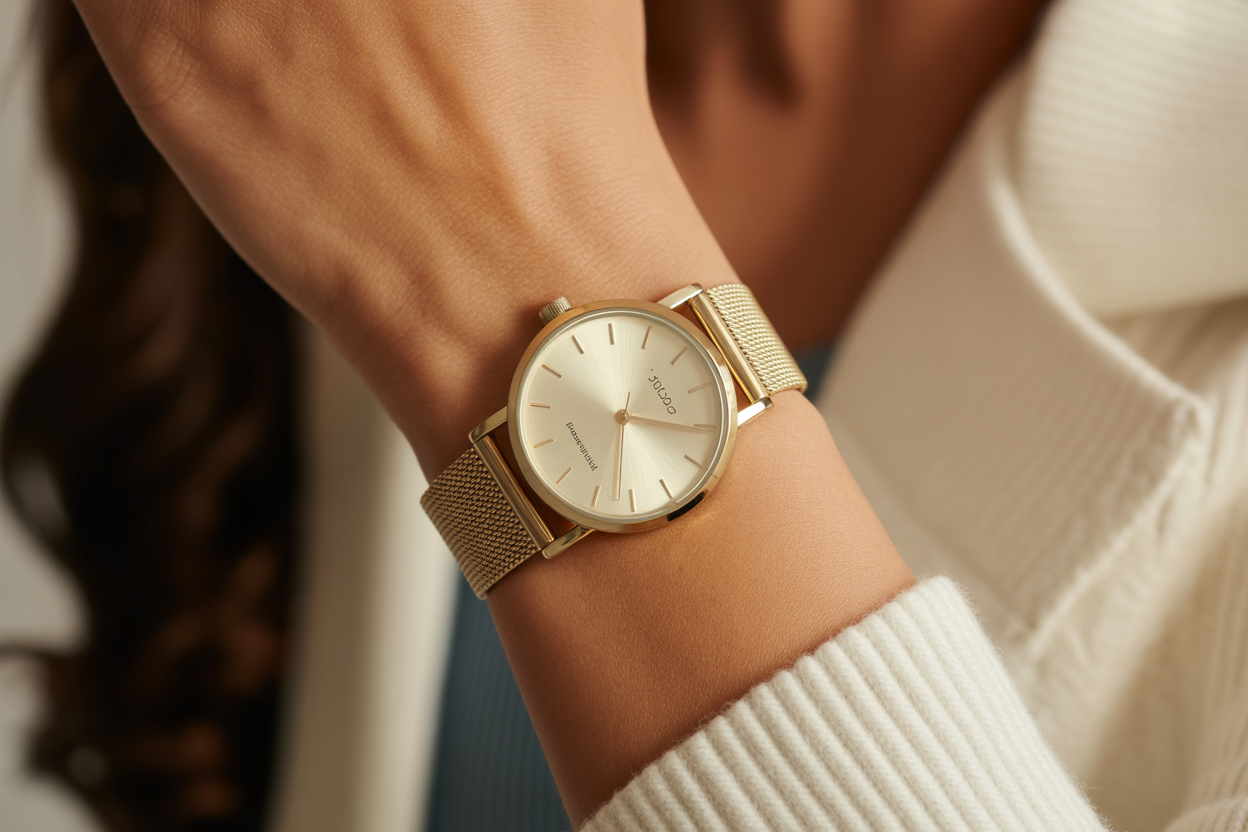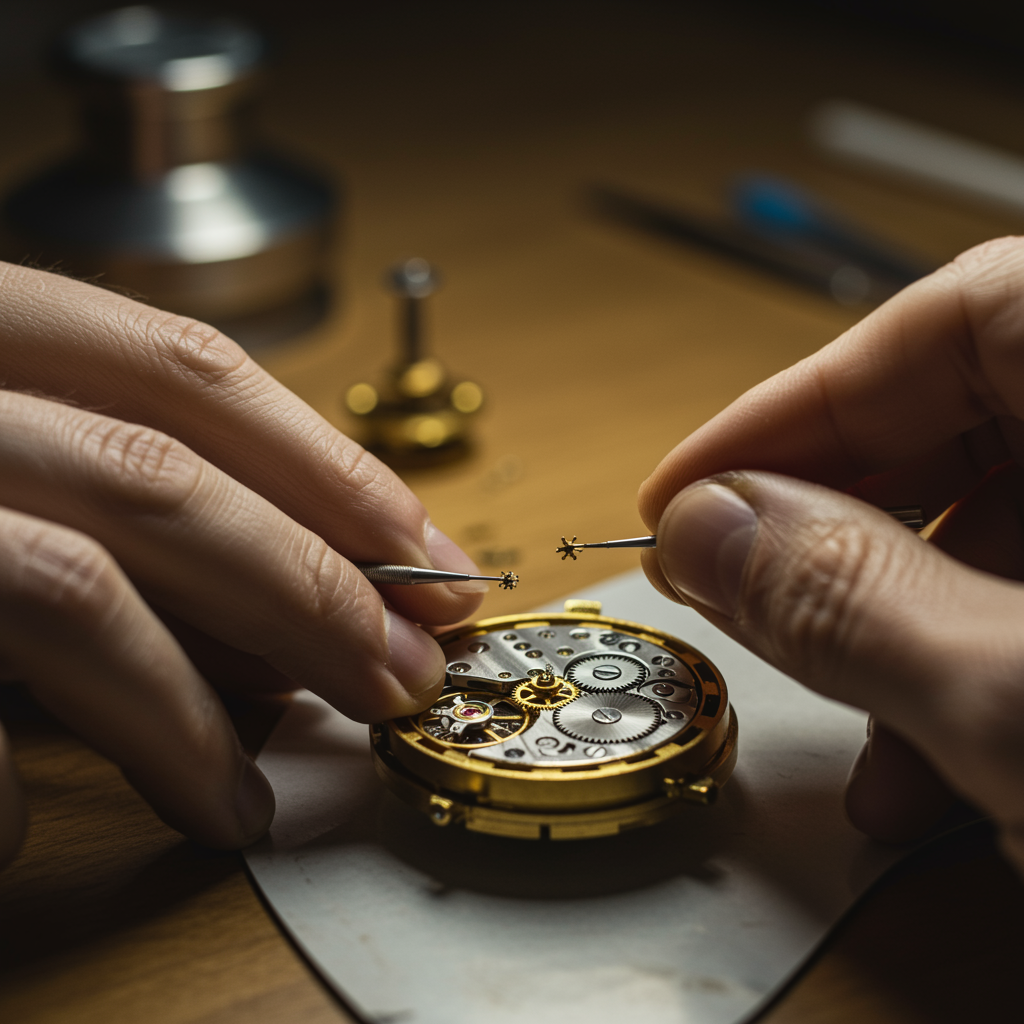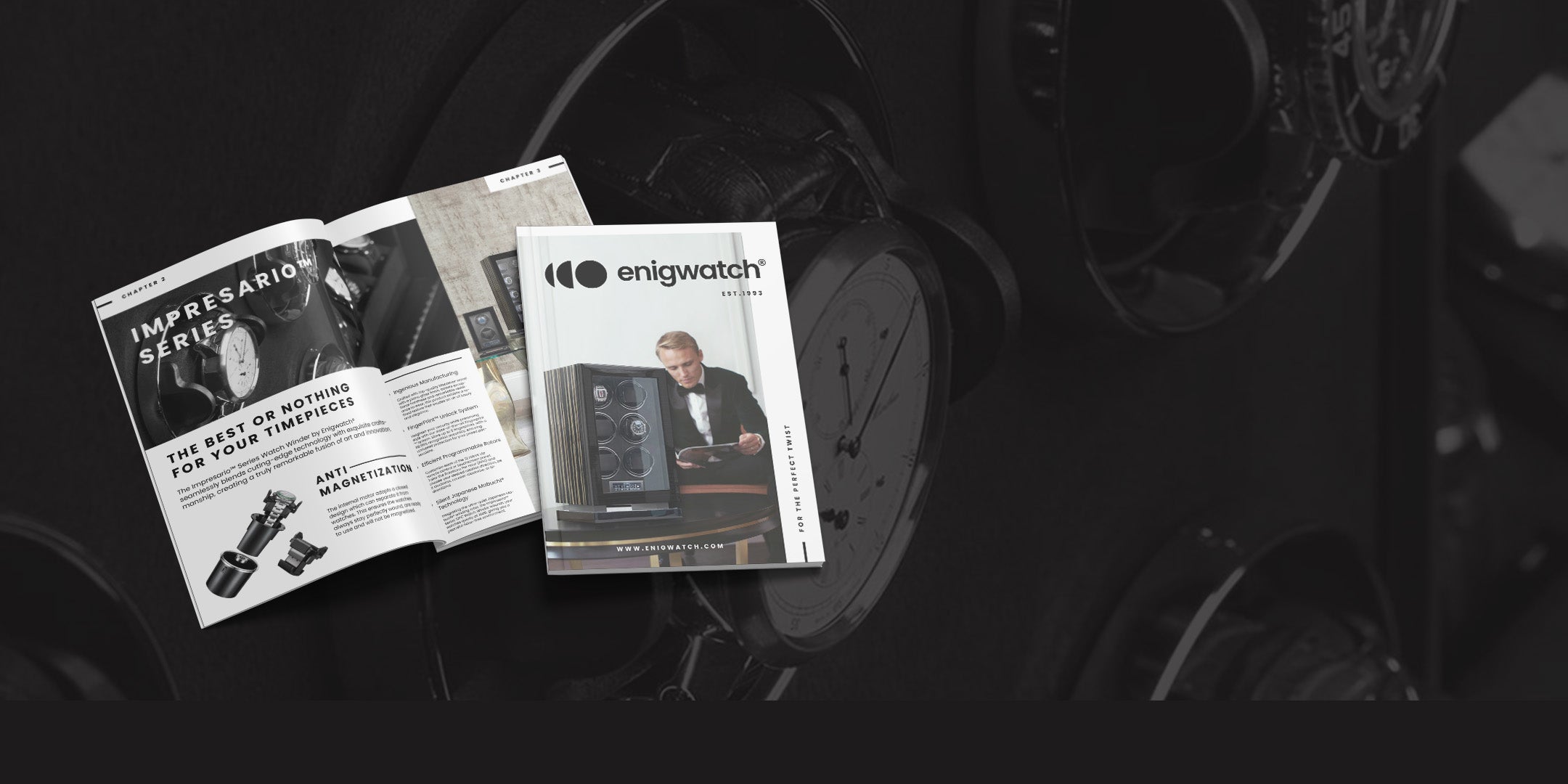Big congrats, you've just purchased your first watch with a mechanical movement! How to Maintain Automatic Watch? and That small disc on your wrist is an icon of the convergence of art and science, and a testament to man's brilliance. As a result, you are the justifiably proud owner of more than simply a timekeeper, and you should be proud of that fact.
Whether you just put it on for special events or carry it with you through all of life's important moments, it should serve you well and last for a good many years without giving you any problems, regardless of how much you spent for it (a week's or a year's worth of money). Set it and leave it. Put it on, and you're good to go. These are the benefits that come along with wearing a mechanical watch.

But before you can enjoy the advantages about How to Maintain Automatic Watch, there are a few things you need to keep in mind that will ensure that the watch continues to function without a hitch until the day when you can hand it down to your children or grandchildren. Invest some effort into properly familiarizing yourself with them. Your wristwatch deserves it.
Read more: Pro Tips: How to Maintain Rolex Watch for Longevity
Wear It Right

Wearing your automatic watch regularly is essential for its upkeep. These watches rely on your motion to wind themselves, with a rotor inside that tightens the springs. Most have a power reserve of 38-40 hours, and when it's depleted, manual winding is needed. However, frequent manual winding can wear out the crown mechanism faster.
Consider a watch winder if your automatic watch isn't your daily choice. It keeps your watch ready to wear without manual winding. But remember, leaving the watch in the winder constantly can wear out its movement, so decide based on your watch's features, like a perpetual calendar, whether to use the winder or wind it manually before wearing.
Exclusive Watch Winder Sale!
SAVE UP TO 60%
Set The Watch

If your automatic watch isn't your daily go-to, consider a watch winder. It keeps your watch ready to wear without the need for manual winding. Keep in mind, though, that leaving your watch in the winder continuously can potentially wear out its movement. Therefore, it's wise to decide based on your watch's features, such as a perpetual calendar, whether to opt for the winder or wind it manually before wearing.
Keep It Clean

Regular watch cleaning is a must, especially if you wear it frequently. Dirt can accumulate over time, making it appear dirty. If your watch isn't water-resistant, gently dab it with a soft cloth to clean it.
For water-resistant watches, cleaning is straightforward. Use a soft cloth soaked in a mix of mild soap and water to wipe away dirt and grime. Take extra care around the watch's crown and push-pieces to preserve its precision.
Keep Your Watch Away from Water or Moisture

One key aspect of caring for your automatic watch is safeguarding it from moisture. While many watches have water resistance ratings, it's essential to understand that these certifications don't mean they can be constantly exposed to water. Even stainless steel watches can rust when consistently moist, and this applies to their bands as well.
After any contact with water, it's crucial to follow the manufacturer's guidelines for drying and storage. Bands, especially those made of steel, with their tiny openings, can trap moisture and should be kept dry to prevent rust. For leather or fabric straps, moisture can weaken the material, making it prone to tearing. Be vigilant about drying such straps promptly to maintain their strength and integrity.
Preventing straps from becoming wet by avoiding damp areas is a wise choice. After all, no one wants to wear a damp strap on their wrist.
Refrain from Placing It Near Electronics or Strong Magnets

Another vital aspect of caring for your automatic watch is safeguarding it against powerful magnets and electronic devices. Since automatic watches rely on moving metal components, they can become significantly disrupted if magnetized. This susceptibility to magnetic fields is a crucial consideration.
Magnetization can disorient the watch's numerous moving parts, leading to reduced accuracy. In our tech-centric world, this issue has gained prominence due to the prevalence of electronic devices. Placing your watch near such devices can lead to magnetization. Therefore, it's essential to be mindful of where you store your watch to avoid proximity to electronic devices that could affect its performance.
Don’t Leave It Unused for a Long Time

Amassing a diverse collection of watches can be exhilarating, offering a wide array of timepieces to choose from. However, as your collection expands, a challenge emerges: you can only wear one watch at a time. This leads to certain watches becoming your favorites, often due to factors like appearance, weight, or how they feel on your wrist—qualities you can only truly assess after acquiring them.
As a result, some watches receive more wrist time than others, while some may sit idle for weeks. This isn't ideal for automatic watches because extended periods of inactivity can cause their lubricants to coagulate, leading to decreased accuracy or even malfunction. To prevent this, it's essential to periodically check on your watches, even if you can't wear them all regularly. You can manually wind them or give them a gentle shake to keep them running smoothly.
Change The Strap Carefully

Changing your watch straps can instantly refresh your watch's look and comfort, almost like acquiring a new timepiece without the hefty price tag. However, exercise extreme caution when doing so, as it's easy to scratch the watch face during the process.
Swapping straps involves removing the spring bar from the lugs, a task that should be handled carefully to avoid unsightly scratches. Investing in proper tools for strap replacement is highly recommended, making the process much smoother. Attempting to save money by using household items like screwdrivers or needles can lead to disaster. You can easily find affordable strap removal and adjustment tools online for under ten dollars, ensuring a hassle-free experience.
Temperature Matters

Automatic watches rely on steel components, which are sensitive to temperature fluctuations—shrinking in the cold and expanding in the heat. These temperature extremes can lead to several issues. Precision may suffer as steel parts expand and contract unexpectedly. Additionally, temperature variations can alter the characteristics of the lubricating oil, thickening in the cold and thinning in the heat. Moisture can also infiltrate the watch due to temperature changes.
As a precaution, avoid wearing your automatic watch in extreme conditions, such as hot tubs, saunas, or very cold environments. For such situations, consider using a sports watch designed to withstand these temperature challenges.
Avoid Winding the Watch When Wearing It on the Wrist

One critical mistake to steer clear of is attempting to wind your watch while it's on your wrist. This practice can be detrimental to the delicate crown stem.
Typically, the crown is connected to the winding mechanism through a short stem, which is susceptible to damage. Winding the watch while it's on your wrist applies sideways pressure to the stem, significantly increasing the risk of unintentional breakage. To safeguard your watch, always follow the proper method of holding it in your hands and applying direct force while turning the crown for winding.
Store It in a Watch Winder
The next piece of advice is to always store your watch collection inside of a suitable watch box. It seems to be the reason that we need to put our pricey automatic watches inside of a suitable box in order to protect them from dust and any other potential hazards that may affect them.
For example, you might preserve the watch by storing it inside of a watch winder, which will continue to wind your timepieces and prevent them from being coagulated. You could also use the watch winder to store the watch.
Keeping it in a box can also protect the watch from becoming magnetized by mistake when it is in close proximity to electrical devices since the box will shield it from the magnetic field.
In addition, you will be able to arrange your watches in a way that makes it simpler to find the one you want to put on, as opposed to having to hunt everywhere for the watch you have in mind to put on.
They believe that if you love what you are doing, you will never grow weary of doing it again because you will find new things to like about it each time. The process of properly caring for your watch and ensuring that it always operates in peak condition is one that requires patience and delicacy.
In the end, though, you will see that the point being made was that an automatic watch, regardless of how tiny it may appear, is still a machine. It is dependent on you to provide care for it.
Read more: 3 Best Watch Winders for Your Rolex Collection (Best Invesment)
Recommendation on Best Watch Winders for Automatic Watches
So, you've invested in a magnificent automatic watch, a marvel of precision and engineering. But here's the big question: how to maintain an automatic watch with utmost care? You've guessed it! It's with the right watch winder, and fortunately, Enigwatch has got you covered. Let's dive deeper into some of the top-notch selections that not only ensure your timepiece keeps ticking but also makes sure it does so in style. Brace yourself, the marvels of engineering from Enigwatch await you!
YACHTLINE™ Series 8
Designed with the sophistication that's reminiscent of a yacht's grandeur, the YACHTLINE™ Series 8 embodies the perfect blend of style and functionality. For those wondering how to maintain an automatic watch without compromising on elegance, this is the answer.
Featuring advanced winding technology that caters to a myriad of timepiece intricacies, it ensures your prized possessions remain in optimal working condition. Experience its luxury and make it yours today.
Virtuoso™ 6 Watch Winder
A harmonious blend of craftsmanship and advanced technology, the Virtuoso™ 6 is for those who hold their timepieces dear. For those searching high and low on how to maintain an automatic watch in the epitome of luxury, this winder promises precision wrapped in an elegant exterior.
Its state-of-the-art winding mechanism ensures each rotation is as precise as your watch's own movement. Don't let this symphony of elegance slip away; secure yours now.
Impresario™ Series 12 Watch Winder
For the true aficionado with a collection that demands nothing but the best, the Impresario™ Series 12 is the magnum opus of watch winders. This masterpiece doesn't just answer the question of how to maintain an automatic watch, but it does so with unparalleled grandeur.
Accommodating up to twelve watches, each slot is meticulously crafted, guaranteeing the utmost care for your horological treasures. Ready to elevate your collection? Discover it here and let your timepieces shine.
Conclusion
So there you have it, some maintenance advice for automatic clocks. We really hope that our post was able to provide you with the useful information you were seeking about How to Maintain Automatic Watch.
You may check out a number of educational, instructive, and intriguing topics on our website here if you're interested in reading more articles that are worth your time. Hello there!

